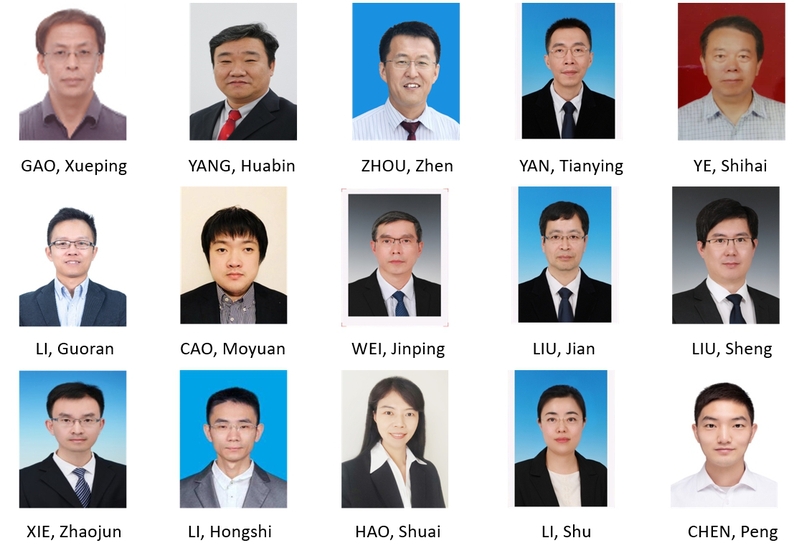Overview



As a well-knownresearch centre for energy storage and conversion, the Institute of New EnergyMaterial Chemistry (INEMC) was established in 1992, initiating studies on hydrogenstorage alloys and developing the first prototype Ni-MH battery in China. Now investigationshave been extended to advanced batteries, supercapacitors and solar cells, etc.The institute is in the School of Materials Science and Engineering, and is locatedat the university’s Jinnan Campus in the southeastern suburb of Tianjin.
Through lasting anddedicating efforts on advanced materials for rechargeable batteries, INEMC hasachieved many honors and awards from the government andbusiness community. Now this institute has 15 faculty members and over 60 graduate students, and is an important part of School of Materials Scienceand Engineering.
Research Foci
Multil-Electron Rechargeable Batteries: developing light-weight materials with multi-electronreactions to fabricate batteries with high energy density, such as Li-Sbatteries and Al ion batteries. Sulfur composite cathodes, protected Li anodesand binary-salt electrolytes are explored for Li-S batteries. Aqueous aluminumion batteries are also developed in terms of safety and cost.
Li-Air Batteries: Rechargeable Li-air batteries have high energy densitycomparable to gasoline.However, they are hard to operate in air dueto the influence of moisture and CO2. However, it would be veryamazing if greenhouse gas CO2was utilized forenergy storage. Therefore, it is attractive to clarify the effects of CO2on Li-O2batteries and fabricate Li-CO2batteries.
Solar Cells and Solar Rechargeable Batteries: developing low-cost and high-performancecounter electrodes such as non-noble metals and its compounds to replace Pt fordye-sensitized solar cells. Solid state perovskite solar cells with highefficiency are fabricated on basis of interface and material design. By combiningsolar cells and rechargeable batteries, solar rechargeable batteries aredeveloped to realize in situ solar-to-electric conversion and storage.
Ultra-Batteries: developing ultra-batteries with both advantagesof high energy and power density from Li-ion batteries and supercapacitors, respectively.The active materials for ultra-batteries can be soluble substances with redoxreactions fixed in micropores as adsorbed ions to avoid shuttle effect andcapacity loss during long charge/discharge cycling. Also, advanced carbon functionalmaterials and nanoscale transition metal oxides with enhanced exterior surface chargestorage are developed for Li ion capacitors.
Computational Simulation and Materials Design: Developing batteries only throughexperiments is both money- and time-consuming. Computational simulations offerpowerful tools to investigate energy storage materials and electrode processes,predict the intrinsic properties, and assist in experimental characterizationand rationalization.
Recent Projects
Multil-Electron Rechargeable Batteries: Sulfur-based composites fabricated withmicroporous/mesoporous carbon or further modified with conductive polymers,present enhanced cyclic stability as cathodes for Li-S batteries. LiFSI andLiTFSI are combined to form a binary-salt electrolyte with higher ionicconductivity and lower viscosity for Li-S batteries to obtain high capacity andstable cyclic performance.
Li-Air Batteries: Extensive investigations areperformed to explore the electrocatalytic mechanisms about the reduction andevolution reactions of O2 and CO2, design compositecatalysts based on carbon materials and transition metal or transition metal oxidenanoparticles, improve the electrochemical reversibility and cyclic stabilityof Li-O2 batteries, clarify the effects of CO2 on thecell reactions, and overcome the key barriers in the jump from Li-O2 batteries to Li-air batteries.
Solar Cells and Solar Rechargeable Batteries: Transition metal nitrides and sulfidesshow highly Pt-like electrocatalytic activity and comparable electrochemicalperformance as counter electrodes in a dye-sensitized solarcell. Some transparent low-cost electrodes are also developed. Based on thephoto-regeneration of two pairs of redox couples, the fabricated solarrechargeable battery demonstrates a photo-charge at light illumination and astable electrochemical discharge in the dark.
Ultra-Batteries: Various ultra-batteries are developed by using atraditional Li-ion battery configuration with soluble iodine and lithiumbromine salt as cathodes. Compared with commercial Li-ion batteries, they havehigher power density. Also, several configurations are fabricated for Li ioncapacitors with prelithiated graphene or transition metal oxide/C compositeanodes and functional carbon cathodes.
Computational Simulation and Materials Design: First-principlescomputations, molecular dynamics (MD) and Monte Carlosimulations are combined to disclose the physical and chemical properties ofnew energy materials, understand electrode/electrolyte interfaces andelectrochemical processes, optimize electrolytes including organic electrolytesand room temperature ionic liquids, and design new energy storage materials anddevices.
Members:

